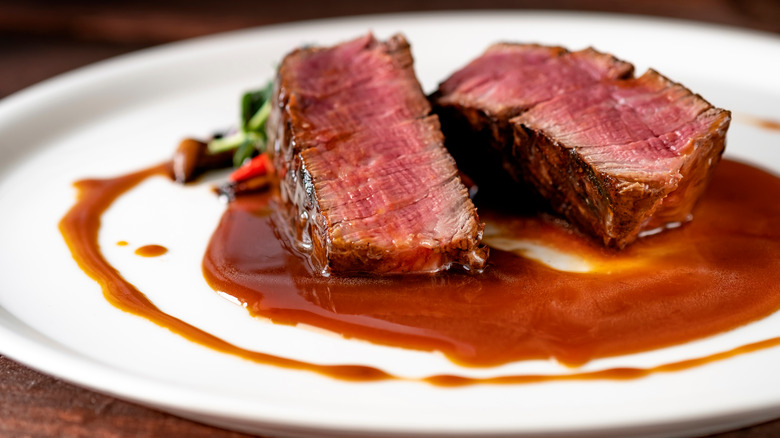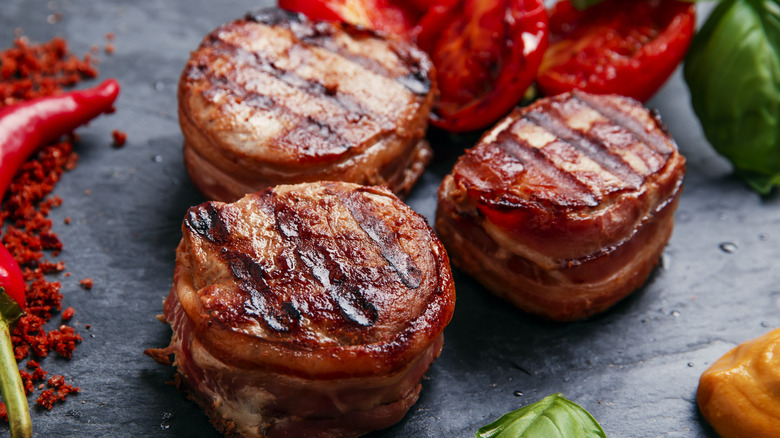Why Filet Mignon Doesn't Need To Be Aged
Steak is one of the few instances where fresher isn't always better. Beef straight from the slaughterhouse doesn't taste that great, according to Meat n' Bone. It retains a metallic taste of blood and, according to the site, just doesn't taste like meat. The Organic Butcher also notes that non-aged meat will be tough since the muscles of the meat tighten during slaughter and need time to relax.
One steakhouse secret to impeccable steak is the aging process. There are two ways to age meat: Wet and dry. Wet-aged beef is the most familiar since it's done with supermarket cuts. Cattleman's Restaurant explains that beef is placed in plastic bags and vacuum sealed. Naturally occurring enzymes tenderize the meat while it ages for 10 days.
Dry-aging is a more complex process that yields more complex flavors. Meat is stored in a humidity-controlled refrigerator between 32 and 34 degrees F with plenty of airflow for anywhere between 17 and 120 days (via Meat n' Bone). While the naturally occurring enzymes get to work tenderizing the steaks, a mold forms over the meat. This is the road to flavortown (and it has nothing to do with Guy Fieri). According to Robb Report, dry-aging meat pulls the water out of it. Because of this, the end result is more of a concentrated flavor.
Why filet mignon doesn't benefit from dry-aging
According to Insider, filet mignon does not need to be aged. However, Robb Reports clarifies filet mignon doesn't benefit from dry-aging. Butcher Katie Flannery, who is the COO of Flannery Beef, explains to the outlet that dry-aged steaks benefit from a layer of bone or fat around the cut. Exposing the meat on all sides will result in the enzymatic breakdown happening to the outer part of the meat, but it would never reach the inside. Because the mold forms directly on the steak, butchers need to cut away a good portion of the meat when the dry-aging process is over. This explains the higher price of dry-aged beef because there's more waste. It's one thing to lose up to 30% (via Dry-Ager) of the meat for a rib eye or New York strip, but quite another for a cut as expensive and limited as filet mignon.
Ultimately, filet mignon is a cut that doesn't require the benefit of dry-aging. Aspen Ridge Beef explains that filet mignon comes from the tip of the tenderloin, the part of the cow that doesn't bear weight. With little muscle and connective tissue, it's more tender. While you can cut through a filet like butter, it's the least flavorful cut. Restaurants will often wrap it in bacon for added fat and flavor. Want a great filet mignon at home but are out of bacon? Basting it in butter also adds richness to this lean cut.

